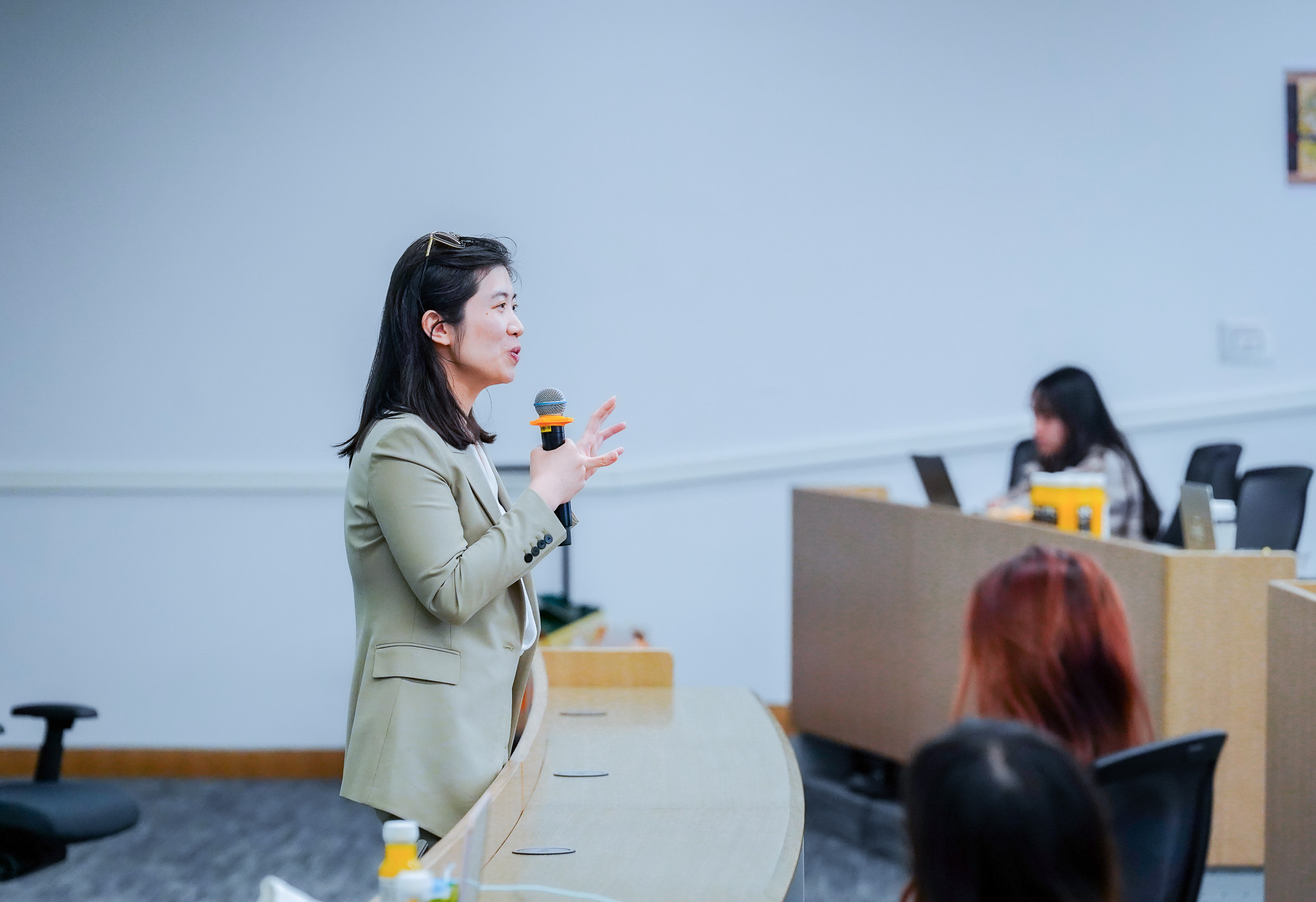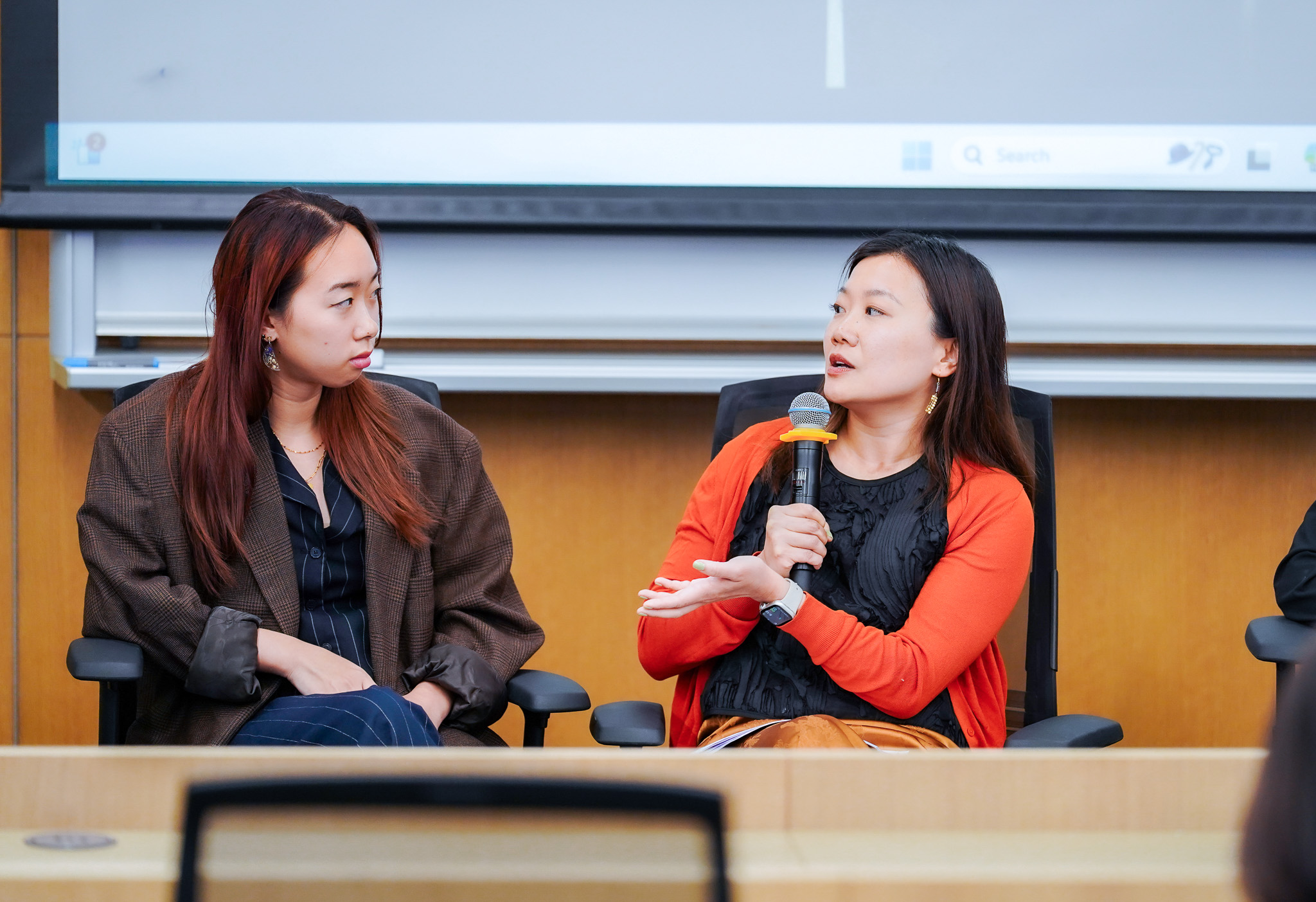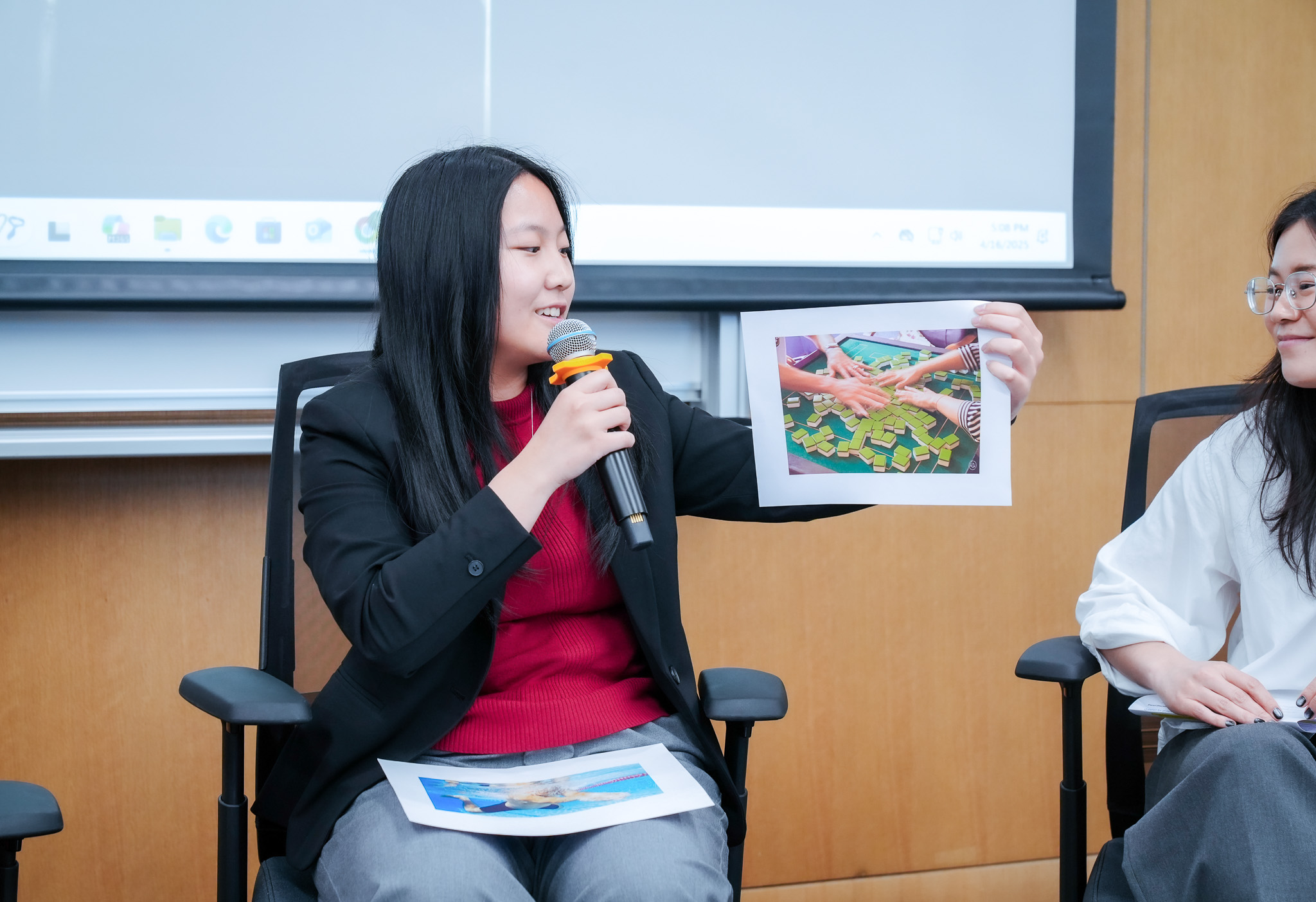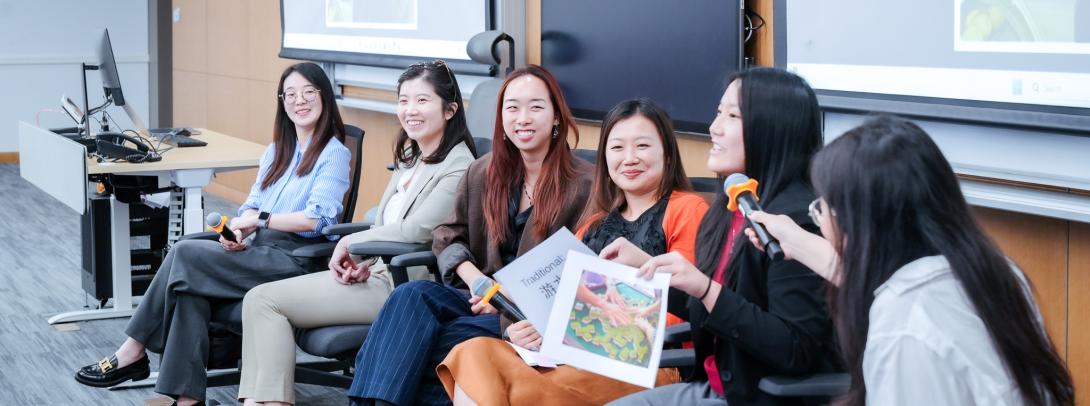A panel of faculty, staff, and students shared their perspectives on Chinese dialects in an event on April 16 hosted jointly by NYU Shanghai Reads and the Chinese Language Program. The panelists, including Director of the Chinese Language Program and Associate Professor of Global China Studies Zou Xin, Assistant Professor of Global China Studies Ka Lee Wong, Senior Language Lecturers of Chinese Gu Beilei and Song Ying, Senior Global Writing and Speaking Fellow Yanny Liang, and Bonnie Chang ’28, shared their personal experiences with dialects and language loss.
Global Writing and Speaking Fellow Ling Groccia, who planned and moderated the event, read the audience a passage from a chapter in Robin Wall Kimmerer’s Braiding Sweetgrass, this year’s NYU Shanghai Reads selection, in which the author discusses the loss of her indigenous language, Potawatomi.
Speaking a dialect is deeply personal for many Chinese people, Groccia says, reflecting on China’s linguistically and culturally distinct landscape. “You can see people light up when they talk about their dialects, and there is a real sentimental feeling as their dialect connects them to family, memory, and place,” she said.
Groccia also pointed out that many Chinese dialects are considered secondary or tertiary to Mandarin as a common language, with some even facing extinction. “There’s a real hurt and loss there,” she said. “So we wanted to create a space on campus that connects to the theme of language loss from Braiding Sweetgrass and gives people space to share their own experiences and memories.”
In her opening presentation, Professor Zou Xin discussed the impact of China’s national language movement and the rise of Mandarin as China’s “common language.” “We often like to think of Mandarin as the ‘empowered,’ something imposed at the expense of other dialects, but that narrative is too simple,” Zou said. Her presentation highlighted initial attempts by policymakers and scholars to combine elements from China’s major dialect families into a "national sound" that better represented the new nation. However, without a strong foundation of speakers, the composite language never took off and the Beijing dialect became the base of what we know today as “Putonghua,” the standard language.

Afterwards, Professor Ka Lee Wong presented her research on the tension between Cantonese media production and the Singaporean government’s efforts to establish Mandarin as one of the city-state’s four official languages. Her presentation highlighted how Singapore’s bilingual language policy dictated that Singaporean Chineseness could only be expressed in Mandarin despite the fact that the majority of Singaporean people in the 1970s spoke Hokkien, Teochew, and Cantonese.
Wong, who grew up in Hong Kong and whose mother tongue is Cantonese, also has Hakka ancestry. “Cantonese is irreplaceable for me,” she said. “Even though I use English in my everyday life, I don’t really feel the pulse of it because it’s not my mother tongue.”

Bonnie Chang ’28 spoke of her close connection to Cantonese, despite having grown up in the United States. While outside the home she spoke English, her parents and older relatives were adamant about speaking to her in Cantonese, even when she protested. “My parents would say to me: ‘Instead of just English, this is how you say it in Cantonese,’” she said. “I have inside jokes with my grandparents that wouldn’t make sense in English, so I’m happy my parents made me preserve [Cantonese].”

The panel discussion opened up conversation with the wider NYU Shanghai community, allowing students to share their own relationships with different Chinese dialects.
Linda Shao ’25, who grew up in Chengdu, speaks Sichuanese with her family and among her surrounding community. “At the wet market, everyone speaks Sichuanese,” she said. “People seem more comfortable communicating in dialect.” While Shao’s schooling has been in Mandarin since primary school, “when speaking Sichuanese, I feel like I can express myself more accurately than in Mandarin,” she said.
Growing up in Connecticut, Yvonne He ’28, heard Fuzhounese all around her at home. But while she can understand it, she can only vocalize simple commands like “go take a shower,” “go to sleep,” and “come eat.” When she visited extended family in Fuzhou recently, her uncle had to translate between her and her great-grandmother, who only speaks Fuzhounese. “I wish I could speak to her,” He said. “I have so many questions.”
Nevertheless, He finds connection to her Fuzhou roots in other ways. “I did get to try my great-grandmother’s cooking when I was in Fuzhou over the break. Food in Fuzhou outshines what I can get in Chinatown or Flushing [Queens]. And that’s a way I feel connected to my culture,” she said.
Senior Global Writing and Speaking Fellow Yanny Liang spoke about how social media resources give her hope for improving proficiency in her dialect and shared a Youtube travel channel completely narrated in Taishanese. “Teaching dialects in school would be an awesome way to move them forward and keep them around, but there are also limitations to that,” she said, “so it’s great to see content on the internet showcasing the diversity [of dialects] and offering new modes of learning.”
The discussion resonated with many attendees, who shared their multifaceted feelings about their dialects and the cultural value of dialect preservation. Community members were invited to a Chinese Conversation Night in the World Languages Lounge on the following night, focused entirely on learning and practicing different Chinese dialects.


